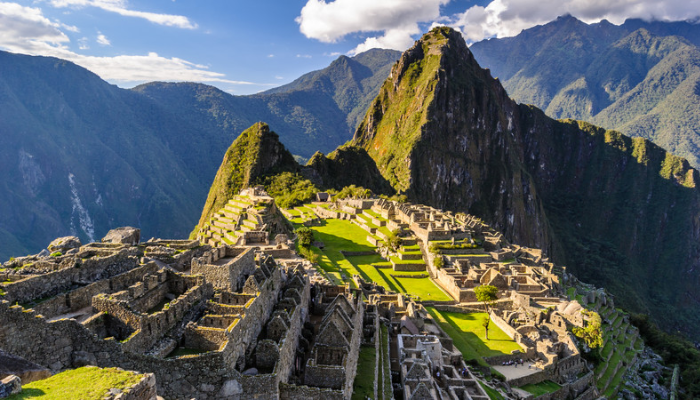The world’s wonders remain a magnet for travellers. The Seven Ancient Wonders of the World, documented by Greek travellers in the fifth century BC, celebrated human ingenuity. These included the Hanging Gardens of Babylon, the Colossus of Rhodes, and the Lighthouse of Alexandria. Today, only the Great Pyramid of Giza survives, standing 4,600 years as a testament to ancient engineering.
Time and nature have taken their toll on the other ancient wonders, leaving them only in history books and legends. But the spirit of marvel did not fade. The New7Wonders Foundation launched a global initiative to recognise heritage sites across the world. Over 100 million votes were cast to select the New Seven Wonders of the World.
The list includes Petra in Jordan, the Taj Mahal in India, and other landmarks that celebrate cultural diversity and human achievement.
Read also: Best 3 destinations to visit in Africa and others in 2024
Travel experts say visiting these wonders offers more than sightseeing. Structured tours and travel packages allow visitors to explore history, architecture, and culture in depth. Planning, securing tickets, and understanding access options are essential for a rewarding experience. These sites continue to inspire awe and connect travellers with the stories of civilisations past and present.
According to the Independent, here is a guide on how to visit each of these wonders.
1. Roman Colosseum, Italy

The Colosseum is the largest amphitheatre ever built and remains a symbol of ancient Roman life. Constructed in the first century AD under the Flavian dynasty, it hosted gladiator battles and animal hunts. It is located in the centre of Rome and is accessible to visitors daily. Tickets can be purchased online in advance or at the entrance. Guided tours and audio guides are available to explain the history and architecture of the site.
2. Petra, Jordan

Petra is an ancient city carved into rock that served as a crossroads for Arabia, Egypt, and Syria-Phoenicia. It was inhabited by the Nabataeans over 2,000 years ago and later became part of Roman and Byzantine territories. Visitors can enter Petra through the Siq, a narrow canyon leading to the Treasury, and explore temples, tombs, and other structures. Entry tickets are required, and the site is accessible on foot or by horse carriage.
Read also: 10 safest countries to visit in Africa in 2024
3. Christ the Redeemer, Brazil

Christ the Redeemer is a 98-foot statue on Corcovado Mountain in Rio de Janeiro. Completed in 1931, it was constructed by engineer Heitor da Silva Costa, with contributions from sculptor Paul Landowski. The site can be reached by train, car, or on foot. Visitors can view the statue and the city from observation platforms. There is an entrance fee for access to the top.
4. Taj Mahal, India

The Taj Mahal, a white marble mausoleum, was built by Emperor Shah Jahan in memory of his wife Mumtaz Mahal. Completed in 1648, it is located on the banks of the Yamuna River in Agra. Visitors can enter the complex through a main gate and explore the mausoleum, gardens, and surrounding buildings. Tickets are required, and there are restricted visiting hours to manage crowds.
Read also: 5 fastest growing tourism destinations in 2024
5. Machu Picchu, Peru

Machu Picchu is a 15th-century Incan citadel in the Andes Mountains. Abandoned shortly after the Spanish conquest, it was rediscovered in 1911. The site can be reached from Cusco by train to Aguas Calientes and then by bus or on foot. Entry requires a ticket that must be booked in advance. Guided tours provide historical and cultural context for the citadel, temples, and terraces.
6. Chichén Itzá, Mexico

Chichén Itzá is a pre-Hispanic Mayan city in the Yucatán Peninsula. The main structure, El Castillo or the Temple of Kukulkan, is a 98-foot step pyramid. Visitors can explore the pyramid, temples, and plazas across the archaeological site. Tickets are required, and it is recommended to visit early in the morning to avoid crowds and heat.
Read also: Here are 5 attractive investment destinations in Africa in 2024
7. Great Wall of China, China

The Great Wall stretches over 13,000 miles and was built to protect China from northern invasions. Construction started in 220 BC and continued until the 17th century. Visitors can access sections of the wall near Beijing, including Badaling, Mutianyu, and Jinshanling. Some areas are more restored and easier to climb, while others are rugged. Entrance fees and cable cars are available at certain sections.









